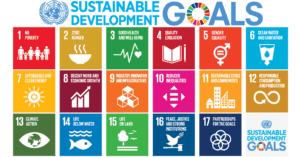2019 is coming t o a close, making it a good time to look back on our most popular blogs this year. From plant-based protein to supply chain legislation, we’ve dug into some of the biggest supply chains trends and developments of 2019. Have you read them all?
o a close, making it a good time to look back on our most popular blogs this year. From plant-based protein to supply chain legislation, we’ve dug into some of the biggest supply chains trends and developments of 2019. Have you read them all?
#10 Transparency vs. Traceability: What’s the Difference
Transparency and traceability are often used interchangeably, but they are in fact two different concepts. Many people refer to “traceability” when they actually want transparency—and vice versa. Understanding the difference between the two is key for developing a supply chain management strategy to capture and communicate the right information.
#9 3 challenges of supply chain transparency
Achieving supply chain transparency is often easier said than done. Gaining visibility into your supply chains is a significant task that requires multiple stakeholders to work together towards a common goal. In a global and fast-moving environment, this becomes even more challenging. Today, we look at the top 3 challenges of supply chain mapping and how to overcome them.
#8 Tackling child labor in global supply chains
According to the International Labour Organization (ILO), 152 million children are still in child labor today. Child labor occurs in all industries, but 7 of every 10 child laborers is in the agricultural sector. Some of the most common industries that employ child labor include cocoa, coffee, cotton, sugarcane, tobacco, garments/fashion, and gold.
Visibility into the supply chains of these commodities is a critical first step in identifying and ultimately eliminating child labor. Many of these industries play key roles in the global economy, making the need to eliminate child labor a daunting yet crucially important task.
#7 The evolution of supply chain transparency
Today you can say the words “supply chain transparency” and nobody will bat an eye. Transparency is now a given, whether as an accomplishment or an objective. But things have not always been this way; the expectation for transparency and visibility in the consumer goods industry is relatively new. How did it come about? We look at the factors in the past century that have led us to today’s modern era.
#6 Lessons in supply chain transparency
Three years ago, we founded Transparency-One. From the start, our mission has been to create a healthier, safer, and more sustainable world through innovative supply chain management. Trends and technologies have transformed the CPG industry over the years; here are some insights we’ve learned.
#5 Uncovering the mystery of alternative protein
 Alternative protein, meat substitutes, fake meat: whatever you call it, it’s on the rise. You may have heard of popular new alternative proteins such as Impossible Foods and Beyond Meat, plant-based and scientifically-driven meat substitutes that continue to gain traction in the marketplace.
Alternative protein, meat substitutes, fake meat: whatever you call it, it’s on the rise. You may have heard of popular new alternative proteins such as Impossible Foods and Beyond Meat, plant-based and scientifically-driven meat substitutes that continue to gain traction in the marketplace.
Meat substitutes have existed for years, but the newest players in the market emphasize their ability to eliminate the use of animals while maintaining an authentic, “meaty” flavor and experience. This has undoubtedly helped sway many mainstream consumers to switch—at least occasionally—from animal meat to plant-based meat.
#4 Cheers to transparency: what’s in my beer?
In a move to “elevate transparency,” American beer brand Bud Light has announced that beginning in February, it will list beer ingredients and nutritional information on-pack. This will make Bud Light “the first US beer to include comprehensive details for ingredients and serving facts directly on packaging.” This information is currently not required to appear on beer labels in the United States. By choosing to disclose this data, the makers of Bud Light are moving the beer industry towards greater transparency—but more progress can still be made.
#3 Australia passes Modern Slavery Legislation
On November 29, 2018, Australia passed the Australian Modern Slavery Act 2018, making it the world’s second anti-slavery legislation. What does the law require? Here’s what you need to know
#2 More sustainable use of chemicals in the textile industry
Chemicals are commonly used in the textile and apparel industry. This can begin as early as the farm, where pesticides may be used for growing raw materials such as cotton or flax. Chemicals may also be used in the production of apparel itself, such as fabric dyeing and treatments (e.g. odor or wrinkle resistance), or for aesthetic purposes, such as denim finishes or other decorative touches.
As consumers become more concerned about the materials and processes involved in the making of their products, how can we ensure more sustainable use of chemicals in the textile and apparel industry?
#1 3 ways transparency can help achieve the UN Sustainable Development Goals
 The United Nations’ Sustainable Development Goals, commonly known as the SDGs, are a set of 17 goals adopted by UN members states in 2015 to help create a safer, more sustainable, and prosperous planet. The SDGs, which compass 169 individual targets, form part of the UN’s 2030 Agenda for Sustainable Development and are meant to “stimulate action over the next fifteen years in areas of critical importance for humanity and the planet.”
The United Nations’ Sustainable Development Goals, commonly known as the SDGs, are a set of 17 goals adopted by UN members states in 2015 to help create a safer, more sustainable, and prosperous planet. The SDGs, which compass 169 individual targets, form part of the UN’s 2030 Agenda for Sustainable Development and are meant to “stimulate action over the next fifteen years in areas of critical importance for humanity and the planet.”
Companies around the world have recognized the importance of the SDGs and the role that business plays in helping achieve them. In fact, many have incorporated the Goals into their CSR strategies as a framework for their own corporate sustainability and social responsibility goals.
Thank you for reading the Transparency-One blog! We wish you a happy holiday and see you in 2020.









